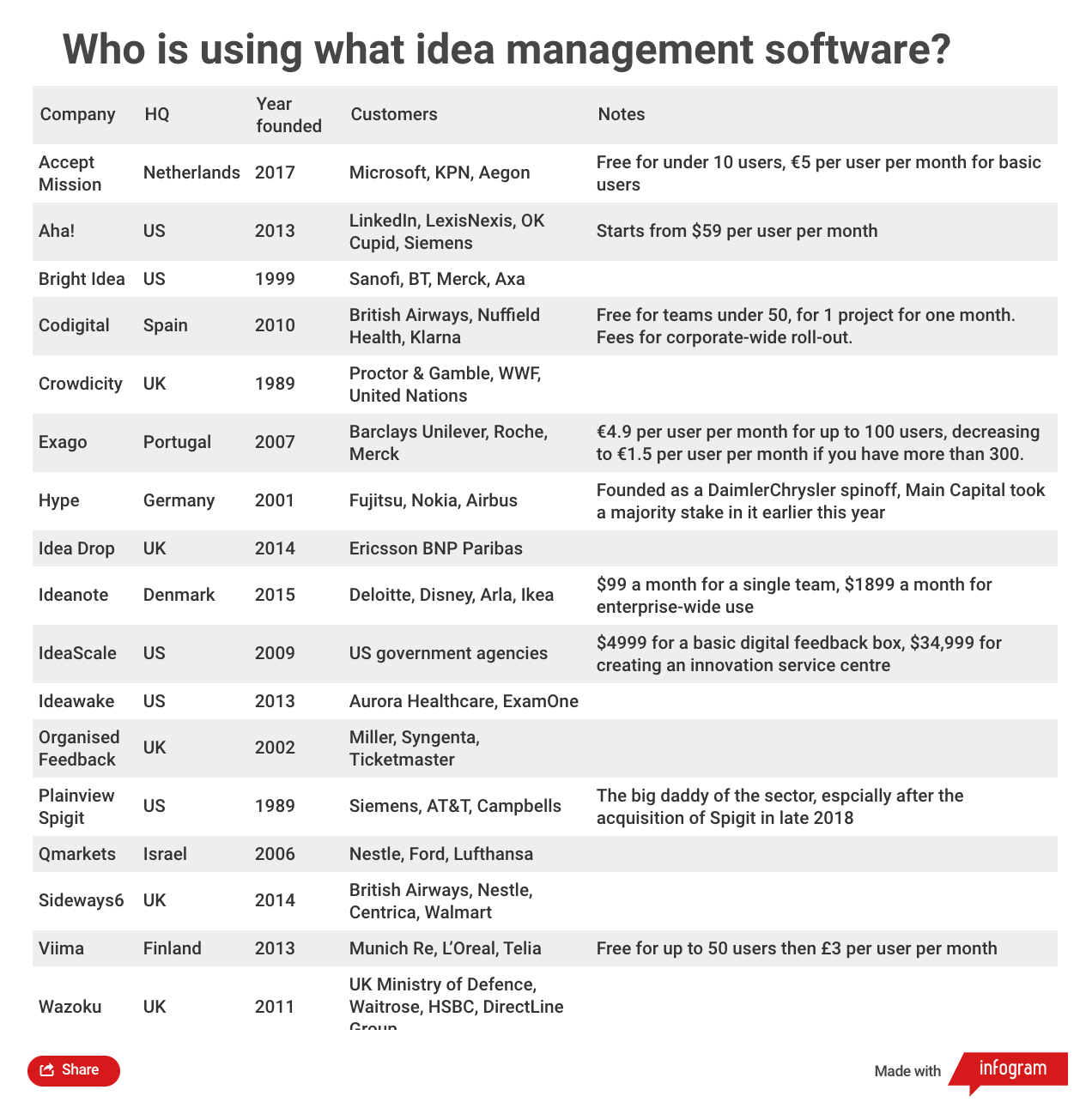It sounded like a good idea in theory.
Dave Lewis, the outgoing chief executive at Tesco, started day one of his job at the supermarket chain in 2014 by sending an email out to all 500,000+ employees asking them to email him comments and ideas.
Don’t do it over email, don’t ask an open-ended question.
The UK supermarket chain was going through a torrid time, revising profits downwards and losing a third of its value on the stock market, so Lewis was keen to gather suggestions for how to improve performance.
His request opened the floodgates. So many responses — tens of thousands — flooded into Lewis’ inbox that Tesco had to hire external consultants to help sort through them. It was a painstaking process to figure out if the problems highlighted were real and very few suggestions were ever actioned.
To be fair to Lewis, shortly after joining he faced an accounting scandal that took up most of his attention but it is still a case study of how not to gather ideas from your staff.
“It taught everyone a lot about how not to do it. Don’t do it over email, don’t ask an open-ended question,” says Simon Hill, chief executive and cofounder at Wazoku, a London-based startup that provides idea management software for companies.
More ideas = more profits
Idea management is an increasingly popular trend in corporate innovation. There has always been a sense that some of the best ideas and improvements come from staff — especially those on the frontline dealing with customers.
But the concept really gained currency in 2017 when Dylan Minor, an assistant professor at the Kellogg School of Management, published research showing a link between financial performance and the rate at which companies gather ideas.
'Ideation rate'= the number of new ideas approved by management divided by the number of employees.
Minor analysed five years of data from 154 public companies using an idea management tool called Spigit and found that idea generation was a science rather than an art. Each company has an 'ideation rate' — the number of new ideas approved by management divided by the number of employees. Minor discovered that companies with a high ideation rate typically grow faster and have higher net income.
Minor also found that there is a science to achieving a high ideation rate. You need to increase the number and diversity of people generating ideas, you need to ask people for ideas more frequently and you need more people evaluating the ideas to make sure the good ones can be taken forward quickly.
But how to do this without an old-fashioned 'email Dave' approach?
Enter dozens and dozens of software companies offering tools to help companies manage the ideation process. They are a mixture of crowdsourcing tools — mobile phone apps that let employees submit ideas for example — and project management software to take the ideas further.
“It is a young market, but it is growing really fast,” says Jesse Nieminen, cofounder and chairman of Finnish idea management company Viima. “When we started [in 2013] there were tens of companies in this space but now there are hundreds.”
Sifted has collected a few of the leading idea management companies in the list below. Let us know if we have missed one and we will keep updating this list:

This chart is also available here.
For more comparison of prices and performance, there are a number of excellent sites, including:
https://www.softwareadvice.com/uk/idea-management/
https://www.capterra.com/idea-management-software/
If you are using one of these tools and would like to tell us — on or off the record — what the experience has been like email me.
Many of the older software companies come from a project management background, which they have adapted to include idea gathering. This enterprise-grade software is great for making sure ideas, once approved, really make it through the corporate system.
A majority of the newer companies, on the other hand, prioritise ease-of-use for staff in order to try to get the number of ideas as high as possible.
Wazoku, for instance, has rolled out a mobile phone app that allows Waitrose staff to submit suggestions.
“It is better than email because only 30% of Waitrose staff have a corporate email address. But all of them have a mobile phone that they can load the app onto,” says Hill.
Do these tools really generate results?
Idea management software companies boast impressive numbers along the lines outlined by Minor’s research for the number of people participating and the number of ideas taken forward. According to Hill at HSBC some 40% of staff have used the tool and 40% of the suggested ideas are being taken forward.
At HSBC some 40% of staff have used the tool and 40% of the suggested ideas are being taken forward.
Wazoku also claims to make real business savings — £3.5m at Waitrose and £3.25m savings at Direct Line.
Nieminen, meanwhile, says that Viima played a role in turning Nordic insurer If from a company with stagnant growth to one of Europe’s best-run companies in the sector.
“They really prioritised innovations around customer satisfaction and got call centre staff to write down all the complaints and feedback they got. Thousands of people submitted ideas and a few thousand have already been put into use. It isn’t due to any individual idea but the sum effect of all these combined,” he says.
But Nieminen admits that it can be difficult to put a precise figure on impact.
“The classic challenge in innovation is measurement. It often takes a long time to see results,” he says.
Who owns the good ideas at a company?
Another tricky question, says Wazoku’s Hill, is whether — and how — companies should reward employees for good ideas.
“As a general rule I don’t like paying for ideas unless it is a really big-ticket project,” says Hill. One school of thought is that all ideas generated on work time should belong to the company and, in any case, it takes more than just a good idea to create a new product or service. “Ideas are easy. But it takes a village to deliver them,” says Hill.
At Direct Line employees get 5% of the value generated by their idea.
But at Direct Line, for example, employees get 5% of the value generated by the idea, which has meant a £50,000 payday for two call centre employees.
Wazoku says it is also considering developing a virtual currency within its software to help incentivise people to collaborate on innovation projects and to share in any eventual rewards.
Whether companies pay for ideas or not, rolling out idea-gathering tools can be a powerful signal to employees about a change to a more inclusive 'listening' culture, says Nieminen.
“Lack of innovation culture is one of the biggest challenges we see with many corporate clients,” says Nieminen. “The chief executive saying ‘let’s innovate’ doesn’t change that. But rolling out tools across the company shows they are serious.”


